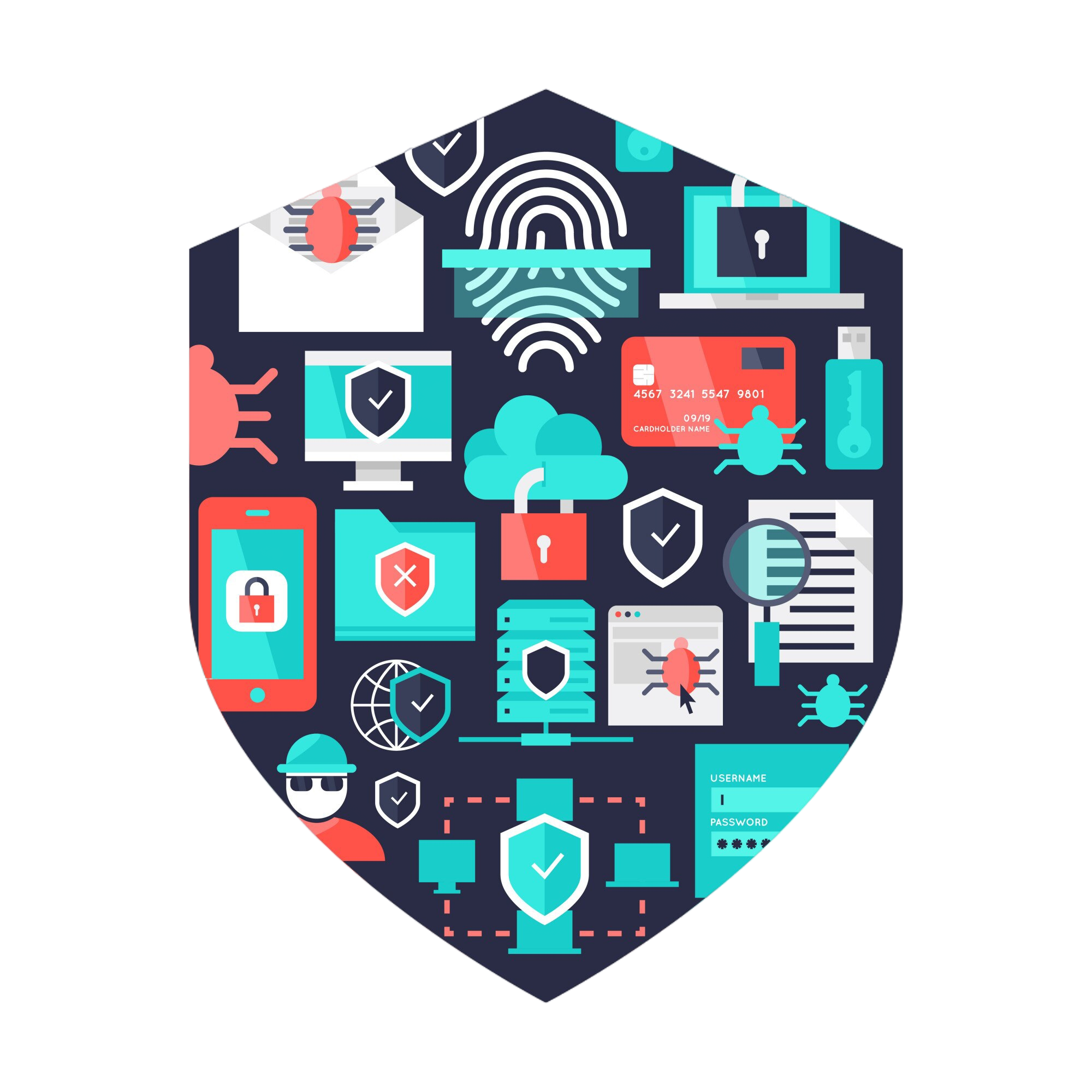/
Lorem ipsum dolor sit amet, consectetur adipiscing elit. Ut elit tellus, luctus nec ullamcorper mattis, pulvinar dapibus leo.

Introduction to Cyber Threats
Cyber threats refer to any malicious activity that aims to compromise the confidentiality, integrity, or availability of computer systems, networks, or data. These threats can take various forms, such as malware, phishing attacks, distributed denial-of-service (DDoS) attacks, and advanced persistent threats (APTs). The impact of cyber threats can be devastating, leading to data breaches, financial losses, operational disruptions, and reputational damage for individuals, businesses, and governments.
Understanding the evolution of cyber threats is crucial for staying ahead of the ever-changing landscape of cybersecurity challenges. As technology advances and our reliance on digital systems grows, threat actors continuously adapt their tactics, techniques, and procedures (TTPs) to exploit new vulnerabilities and evade detection. By examining the historical progression of cyber threats, we can gain valuable insights into emerging trends, anticipate future risks, and develop effective mitigation strategies to protect our digital assets and infrastructure.

Early Days of Cyber Threats
The origins of cyber threats can be traced back to the early days of computing, when viruses, worms, and hacking activities first emerged. One of the earliest known computer viruses was the Creeper virus, which appeared in the early 1970s and was designed to travel between connected systems, displaying the message “I’m the creeper, catch me if you can!” [https://www.mayhem.security/blog/history-of-computer-hacking-and-cybersecurity-threats-from-the-50s-to-today]
In the 1980s, the Morris Worm, created by Robert Tappan Morris, was one of the first major computer worms to propagate across the internet, causing widespread disruption and highlighting the potential for malicious code to spread rapidly. This event is often cited as a pivotal moment that raised awareness about the need for cybersecurity measures.
As personal computers became more prevalent in the 1980s and 1990s, hacking activities also increased, with individuals and groups exploring vulnerabilities and engaging in unauthorized access for various reasons, including curiosity, mischief, or malicious intent. Early hacking groups, such as the Masters of Deception and the Chaos Computer Club, gained notoriety for their exploits and challenged the security of systems.
The Internet Era
The advent of the internet and widespread connectivity revolutionized the way we communicate and access information, but it also paved the way for a new breed of cyber threats. As more devices became connected, cybercriminals found novel avenues to exploit vulnerabilities and launch attacks on a larger scale.
One of the most prevalent threats that emerged during this era was phishing. According to a report by [USA Today], over 43% of all cyber threats found in emails were phishing scams in 2024. These deceptive tactics aimed to trick users into revealing sensitive information or inadvertently installing malware on their systems.
Malware, including viruses, worms, and Trojan horses, also became a significant concern. These malicious programs could infect devices, steal data, or even hijack systems for nefarious purposes. The interconnectivity of the internet facilitated the rapid spread of malware, making it a formidable threat.
Furthermore, the rise of botnets, networks of compromised devices controlled by cybercriminals, enabled large-scale distributed denial-of-service (DDoS) attacks and other malicious activities. These botnets could harness the collective power of thousands or even millions of infected devices, posing a severe threat to online services and infrastructure.
Advanced Persistent Threats (APTs)
Advanced Persistent Threats (APTs) emerged as a significant cyber threat in the 2000s, characterized by their sophisticated nature, well-resourced actors, and targeted attacks on high-profile organizations and nations. These threats are typically carried out by state-sponsored groups or highly skilled cybercriminal organizations with substantial resources and expertise.
APTs are known for their stealthy and persistent approach, often involving multiple phases such as reconnaissance, infiltration, lateral movement, and data exfiltration. They employ advanced techniques like zero-day exploits, social engineering, and custom malware to bypass security measures and maintain a long-term presence within the targeted networks.
Notable examples of APTs include Stuxnet, a highly sophisticated malware believed to be a joint effort by the United States and Israel, which targeted Iran’s nuclear program in 2010 [https://www.cybereason.com/blog/advanced-persistent-threat-apt]. Another example is the Hydraq campaign, attributed to a nation-state actor, which targeted organizations in the Middle East and Central Asia for cyber espionage purposes.
APTs pose significant challenges to organizations and nations due to their advanced capabilities, persistent nature, and the potential for severe consequences, such as data breaches, intellectual property theft, and disruption of critical infrastructure. Mitigating these threats requires a comprehensive cybersecurity strategy, including robust defense mechanisms, continuous monitoring, and a proactive approach to threat intelligence and incident response.
The Ransomware Epidemic
The ransomware epidemic has emerged as one of the most significant cyber threats of the modern era. These malicious attacks, which encrypt a victim’s data and demand a ransom for its decryption, have caused immense financial and operational disruptions across various sectors.
According to [Cybersecurity Ventures], global ransomware damage costs are predicted to exceed $265 billion annually by 2031, with a new attack occurring every 11 seconds. The rise of ransomware can be attributed to the increasing sophistication of cybercriminal groups and the lucrative nature of these attacks.
The financial impact of ransomware attacks is staggering. [Astra Security] reports that the average cost of a ransomware incident is $1.85 million, with costs ranging from data recovery expenses, system downtime, and reputational damage. Moreover, [Statista] reveals that in the second quarter of 2023, 34% of organizations worldwide paid the ransom demands, highlighting the difficult decisions companies face when confronted with these attacks.
Ransomware has evolved from simple encryption techniques to more advanced tactics, such as double extortion, where cybercriminals not only encrypt data but also threaten to leak sensitive information if the ransom is not paid. Additionally, ransomware-as-a-service models have lowered the barrier to entry for cybercriminals, enabling them to launch attacks more easily.
Emerging Cyber Threats
The cyber threat landscape is constantly evolving, with new and sophisticated threats emerging at an alarming rate. One area of concern is the Internet of Things (IoT), where the proliferation of connected devices has created a vast attack surface for cyber criminals. Poorly secured IoT devices can be exploited and used as entry points into networks, leading to data breaches and disruptions. According to [Recorded Future], threat actors are increasingly targeting IoT devices for distributed denial-of-service (DDoS) attacks, data theft, and even as a means to gain access to critical infrastructure.
Another emerging threat is the use of artificial intelligence (AI) and machine learning (ML) techniques by cyber criminals. As these technologies become more advanced, they can be used to automate and scale up attacks, making them more efficient and harder to detect. AI-powered attacks could include sophisticated phishing campaigns, automated vulnerability scanning, and the generation of malicious code [according to Simplilearn].
Critical infrastructure systems, such as power grids, water treatment facilities, and transportation networks, are also at risk from emerging cyber threats. These systems are often outdated and vulnerable to attacks, which could have devastating consequences. The International Monetary Fund (IMF) [warns] that cyber attacks on critical infrastructure could lead to significant economic disruptions and pose serious concerns for financial stability.

Cybersecurity Challenges and Mitigation Strategies
Combating cyber threats is an ongoing battle that organizations and individuals face in today’s digital landscape. One of the primary challenges is the ever-evolving nature of cyber threats, which require constant vigilance and adaptation. As threat actors become more sophisticated, they employ advanced techniques such as zero-day exploits, social engineering, and targeted attacks, making it increasingly difficult to detect and mitigate these threats.
Effective mitigation strategies and best practices are crucial in addressing these challenges. The National Security Agency (NSA) has outlined the top ten cybersecurity mitigation strategies [https://www.nsa.gov/portals/75/documents/what-we-do/cybersecurity/professional-resources/csi-nsas-top10-cybersecurity-mitigation-strategies.pdf], which include implementing secure configurations, actively managing system access, and regularly patching and updating systems.
Additionally, organizations should prioritize cyber risk assessments to identify vulnerabilities and establish a dedicated cyber risk management team to coordinate mitigation efforts. Automating security processes and leveraging advanced technologies such as artificial intelligence and machine learning can also enhance threat detection and response capabilities [https://securityscorecard.com/blog/8-top-strategies-for-cybersecurity-risk-mitigation/].
Insider threats, whether intentional or unintentional, pose a significant risk to organizations. Proactive measures, such as employee training, access controls, and monitoring mechanisms, can help mitigate these threats [https://www.cisa.gov/topics/physical-security/insider-threat-mitigation]. Fostering a culture of cybersecurity awareness and promoting best practices among employees is also essential in strengthening an organization’s overall cybersecurity posture.
Conclusion
The evolution of cyber threats has been a relentless and ever-changing landscape, with new challenges emerging at every turn. From the early days of viruses and worms to the sophisticated advanced persistent threats and the recent surge in ransomware attacks, the cybersecurity landscape has become increasingly complex and daunting.
It is crucial to understand that cyber threats are not a temporary phenomenon but an ongoing battle that requires constant vigilance and proactive measures. As technology continues to advance, so will the tactics and techniques employed by cybercriminals. Staying ahead of these threats demands a multi-faceted approach, involving robust security measures, continuous education and awareness, and collaboration between organizations, governments, and individuals.
Cybersecurity is not just a concern for large corporations or government entities; it is a responsibility that falls on everyone who uses digital devices and networks. By prioritizing cyber defense, implementing strong security practices, and staying informed about the latest threats and mitigation strategies, we can collectively contribute to a safer and more secure digital environment.